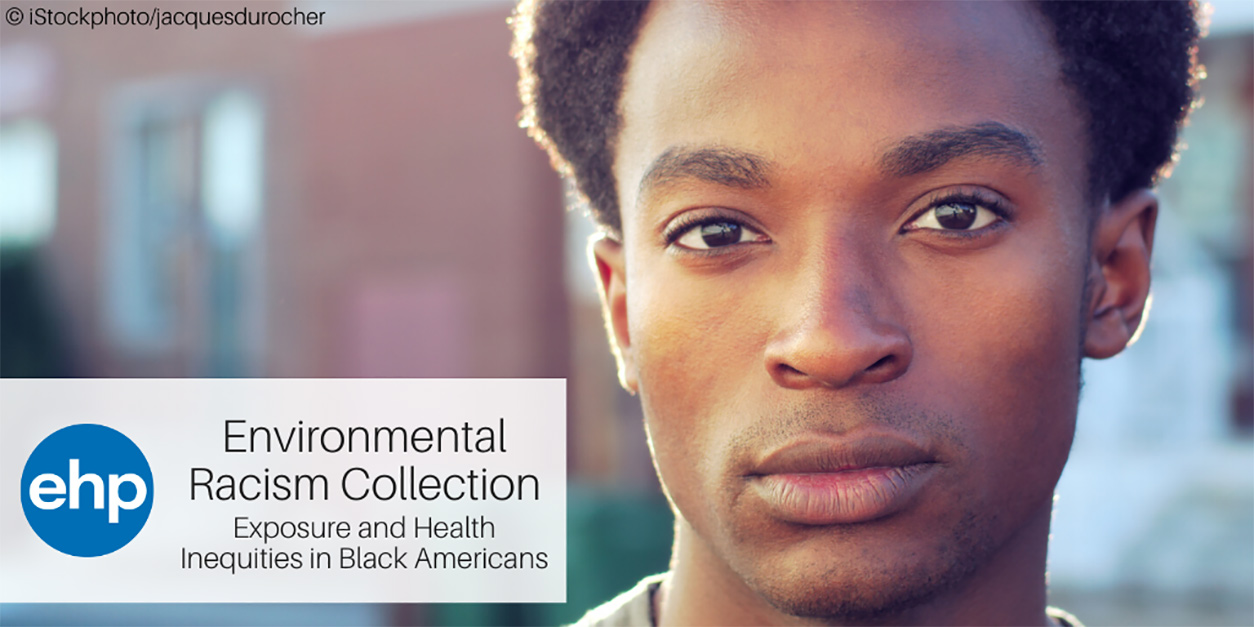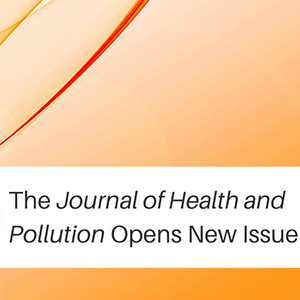The NIEHS-affiliated journal Environmental Health Perspectives (EHP) curated a special collection of papers related to exposure and health inequities in Black Americans(https://ehp.niehs.nih.gov/curated-collections/environmental-racism). EHP began promoting the collection in early August, and in just five months, it has received approximately 2,000 visits. As part of the Environmental Factor series on ways that NIEHS is working to advance racial equity, we take a closer look at this collection, which complements earlier collections on environmental health of indigenous populations(https://ehp.niehs.nih.gov/curated-collections/indigenous-health) and elderly(https://ehp.niehs.nih.gov/curated-collections/healthy-aging).
“Motivated by this unprecedented time in U.S. consciousness, we compiled original research, reviews, and other content previously published,” wrote EHP News Editor Susan Booker Woolard in a Dec. 11 internal NIEHS blog post. “Although none of these papers specifically names racism as an environmental health factor, growing evidence indicates that it is, in fact, both a social determinant of health and a public health crisis.”
 Environmental racism is rooted in discriminatory policies and practices, for example, in zoning codes and development decisions, as well as socioeconomic disparities. (Image courtesy of NIEHS)
Environmental racism is rooted in discriminatory policies and practices, for example, in zoning codes and development decisions, as well as socioeconomic disparities. (Image courtesy of NIEHS)“Blacks had higher death rates than whites for all-cause mortality in all age groups [under age] 65 years,” concluded a 2017 report from the U.S. Centers for Disease Control and Prevention. EHP editors specified some of those causes in the collection’s introduction.
“To understand environmental racism is to understand, in part, the inequity that drives health disparities in Black Americans, who face higher rates of infant mortality as well as death from type 2 diabetes, heart disease, multiple cancers, homicide, and HIV, compared with white counterparts,” they wrote. “Yet this and other racial [and] ethnic groups tend to be underrepresented in studies of many of the chronic diseases that affect them disproportionately.”
This underrepresentation occurs despite a 1993 congressional directive that the National Institutes of Health diversify study populations by race and ethnicity.
 “Environmental racism concentrates disadvantaged populations in substandard housing and compromised communities, where hazardous exposures are much more likely,” wrote the EHP editors. (Image courtesy of NIEHS)
“Environmental racism concentrates disadvantaged populations in substandard housing and compromised communities, where hazardous exposures are much more likely,” wrote the EHP editors. (Image courtesy of NIEHS)From exception to norm
EHP Editor-in-Chief Joel Kaufman, M.D., who came on board in early 2020, underscored the project’s objectives. “We recognize that racism is a public health crisis with many roots — including those that stretch deeply into the interplay between environment and health,” he said in an August announcement(https://ehp.niehs.nih.gov/do/10.5555/c28456dc-c2ca-42f4-b978-d4242588dc20/full/). “This curated collection, which will continue to grow, is a small step in the journal’s work to understand and address inequities that fuel health disparities.”
So far, the collection includes 14 original research papers as well as reviews, feature articles, commentaries, and an editorial. All were published in EHP from 2004 to 2019.
 “After the murders of George Floyd and so many others, I felt compelled to use my privilege to expose and confront racism however I can,” said Boyd. “I hope this collection will be one step toward reducing environmental racism and inequities.” (Photo courtesy of Steve McCaw / NIEHS)
“After the murders of George Floyd and so many others, I felt compelled to use my privilege to expose and confront racism however I can,” said Boyd. “I hope this collection will be one step toward reducing environmental racism and inequities.” (Photo courtesy of Steve McCaw / NIEHS)“The journal is actively recruiting more environmental health studies and commentaries that directly address structural racism as a factor in health disparities,” said EHP Senior Science Editor Windy Boyd, Ph.D. “We hope to see structural racism and other factors that affect disparities become more of the norm than the exception in environmental health research.”
The strategy appears to be working. “The editorial team has noticed an increase in the number of research and commentary articles submitted for potential publication since we posted the collection,” she observed. “We anticipate publication of a few of these articles in early 2021.”
Hot topics
Within the collection, papers cited most frequently address air pollution, maternal and child health, as well as psychosocial and residential factors. Full citations appear at the end of this article.
- “Environmental health disparities: a framework integrating psychosocial and environmental concepts.”
- “Separate and unequal: residential segregation and estimated cancer risks associated with ambient air toxics in U.S. metropolitan areas.”
- “Environmental inequality in exposures to airborne particulate matter components in the United States.”
- “The environmental ‘riskscape’ and social inequality: implications for explaining maternal and child health disparities.”
Among the news articles, “Racial and Ethnic Disparities in Research Studies: The Challenge of Creating More Diverse Cohorts,” published in 2015, has the most attention and has even been cited in research papers.
Citations:
Bell ML, Ebisu K. 2012. Environmental inequality in exposures to airborne particulate matter components in the United States. Environ Health Perspect 120(12):1699–1704.
Gee GC, Payne-Sturges DC. 2004. Environmental health disparities: a framework integrating psychosocial and environmental concepts. Environ Health Perspect 112(17):1645–1653.
Morello-Frosch R, Jesdale BM. 2006. Separate and unequal: residential segregation and estimated cancer risks associated with ambient air toxics in U.S. metropolitan areas. Environ Health Perspect 114(3):386–393.
Morello-Frosch R, Shenassa ED. 2006. The environmental 'riskscape' and social inequality: implications for explaining maternal and child health disparities. Environ Health Perspect 114(8):1150–1153.
Oh SS, Galanter J, Thakur N, Pino-Yanes M, Barcelo NE, White MJ, de Bruin DM, Greenblatt RM, Bibbins-Domingo K, Wu AHB, Borrell LN, Gunter C, Powe NR, Burchard EG. 2015. Diversity in clinical and biomedical research: a promise yet to be fulfilled. PLoS Med 12(12):e1001918.
Cunningham TJ, Croft JB, Liu Y, Lu H, Eke PI, Giles WH. 2017. Vital signs: racial disparities in age-specific mortality among Blacks or African Americans — United States, 1999–2015. Morb Mortal Wkly Rep 66(17):444–456.

See sidebar above for more information. (Image courtesy of NIEHS)









